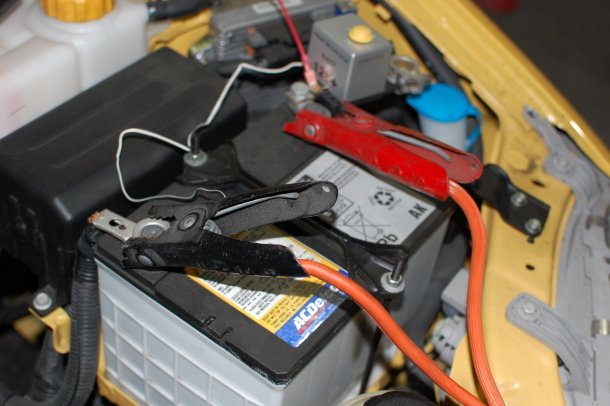Alternator amperage has nothing to do with the battery size. Just like the cold cranking amps (CCA) rating of the battery indicates the maximum current it can deliver, the output rating of the alternator indicates the maximum it can produce. That's just it for both of them; the maximum. Alternators are self-regulating in that respect. They simply won't produce more current than their design allows for.
The standard alternator was rated at 33 amps. If it has a dual pulley, it was made for cars with air conditioning and those were designed for 55 amps. I don't recall there being any larger alternators in the '60s, but starting with the 1970 models there was also a 78 amp unit. All of those are puny by today's standards but back then there were no computers, no electric fuel pumps, and no electronic fuel injection. It was rare to need 33 amps to run all the lights, heater fan, and wipers with a little left over to recharge the battery. When rebuilders got a hold of these to repair, it didn't cost any more to rebuild the 55 amp units so they often just did those. That one alternator could be used in any application so they had fewer part numbers to stock on the shelves. If you have the dual pulley but the car doesn't have air conditioning, put the belt on the rear groove. There is no issue with using a larger alternator. If the demands of the car's electrical system is 30 amps, that's all either alternator will deliver; no more. If the demands are 45 amps, the smaller one won't keep up and some current will come from the battery. That won't hurt either as long as that's a temporary condition.
Before you replace the alternator, look for the smaller wire attached to the back of it. With the engine running, use a piece of wire to connect that wire right to the bolted-on output wire. There might be a black rubber cap you have to move out of the way. Monitor the battery voltage while you do this and do not raise engine speed, at least not very much. This full-fields the system to make the alternator run wide open. Only the battery will be holding system voltage down to a safe level. What you are doing is bypassing the voltage regulator. If battery voltage goes up a bunch, the alternator is working. If it does, remove that jumper wire, then measure the voltage on that smaller wire. If it's fairly high, say 8 - 10 volts, the regulator is trying to run the alternator but without much success. That would be the time to seek a mechanic with a professional load tester. If one diode is bad inside the alternator, you will lose exactly two thirds of its output capacity and it won't come close to keeping up with demand. Rather than retyping this all over again, you might want to check out these pages:
http://randysrepairshop.net/charging-systems.html
http://randysrepairshop.net/charging-system-theory-of-operation.html
You're the second person to be working on this 1960 - 69 system recently so I'll try to add a page specific to it soon. You have a "B" system when it comes to full-fielding it. The 1970 - 89 electronic system is an "A" circuit. It works the same way but it's even easier to full-field.
For reference, the 1960 - 69 alternator can not work on a 1970 and newer car but the newer model can be used on '69 and older cars by grounding one field terminal. Rebuilt alternators used to come with a metal washer that could be installed in place of the fiber insulating washer on one field terminal to make it work on the older cars. If you see two field terminals and one doesn't have a wire attached, that's why.
Sunday, April 29th, 2012 AT 7:54 PM



